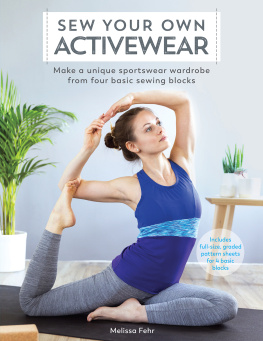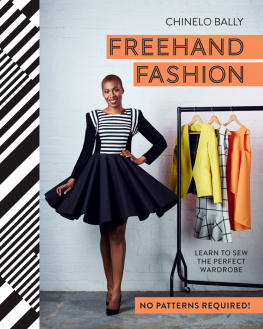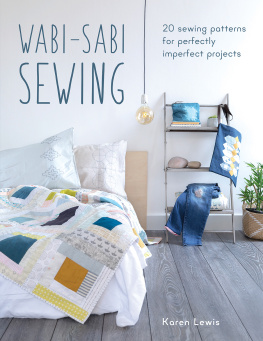Contents
Guide
SEW YOUR OWN
ACTIVEWEAR
Make a unique sportswear wardrobe from four basic sewing blocks
Melissa Fehr

www.sewandso.co.uk
CONTENTS
INTRODUCTION
The fashion world has seen an explosion in the popularity of activewear in the past few years and the sewing community has quickly followed suit. When I launched the first of my activewear sewing patterns in 2013 there were a few pattern options for basic designs, but fully functional activewear that would stand up to the rigours of my daily marathon training just didnt exist. Over the years, Ive released thirteen different sewing patterns specifically designed for fitness and movement: some focused on running or cycling, but others suited for horseback riding or yoga, all of which have different movement and functional requirements.
I started my running and sewing journeys almost simultaneously when I moved to London from Pennsylvania in the early 2000s and the progression of each pursuit has mirrored the other. Just as I started running for only a few minutes on the gym treadmill gradually progressing to running 10k races, then half marathons, marathons and even an ultra marathon, my sewing too has progressed. I think most of us start with a simple skirt or pillowcase, but my love of stretch fabric shone through early on one of my first ever projects was a t-shirt refashion! Over the years Ive since sewn everything, from jeans to bras to coats to my wedding dress (refashioned from my grandmothers vintage gown), and it was a lack of choice in existing activewear designs that led me to start sewing these too.
So far Ive run seven full marathons all in my own-sewn gear, but you dont have to be a marathon runner to make great-looking and functional activewear. This book takes a block-based approach, starting with four basic top and bottom patterns that can be transformed and adapted into thirteen different activewear designs. Additionally youll learn: the skills to sew and finish your designs using your home sewing machine (even without an overlocker/serger), to select fabric that wont let you down, and even how to adapt the designs further to suit the exact activities youre into.
Sewing my own activewear has freed me from bland and boring designs and allowed me to express myself without hindering my ability to move and perform in a race situation. Its brought me joy and creativity and given me the confidence to try new sports and push myself further than I ever thought possible. If you can sew a t-shirt, you can sew your own activewear and Im here to show you how.
ACTIVEWEAR SEWING SKILLS
If you've sewn with jersey and other stretch fabrics before, then you may be tempted to skip this section don't! Selecting the right stitches, edge finishing and fabric for your activewear makes is just as important as the pattern itself. What works for your average t-shirt won't necessarily work when you're sweating it out in the gym. Take the time now to experiment with different techniques on scrap fabrics or swatches of high-end activewear fabrics and it will pay off with better quality garments later on.

SEWING TECHNIQUES
Most clothing is designed to look good when the wearer is standing or sitting and, apart from the odd walking vent, other movements arent really taken into consideration. But the movements required by even the most sedate yoga session can put a huge strain on your clothing, with the seams usually bearing the brunt of the stress. Some of this is mitigated by the stretch and recovery of your fabric (see ), but you will need to construct your activewear using stitches that will stretch in every direction without breaking or causing irritation.
SEAMS
USING A SEWING MACHINE
If you only have a sewing machine, the narrow zigzag stitch will be your new standby (A).

Set the stitch length short and use this zigzag for all your basic seam construction, trimming the seam allowances close to the stitching after sewing. A walking foot is a fantastic investment if you do any volume of sewing with stretch fabrics it ensures both layers of fabric move at the same rate and prevents the rippling you can sometimes see when using a regular presser foot. If you dont have a walking foot, be sure to loosen your presser foot tension (if possible) and do not stretch the fabric as you sew!
If you find that the regular zigzag is not strong enough, some other good choices for seams are: the stretch straight stitch (sometimes referred to as a lightning bolt stitch) (B) or the lingerie makers favourite the triple zigzag (aka the Marcel stitch) (C).
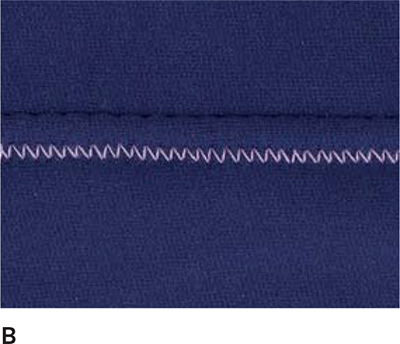
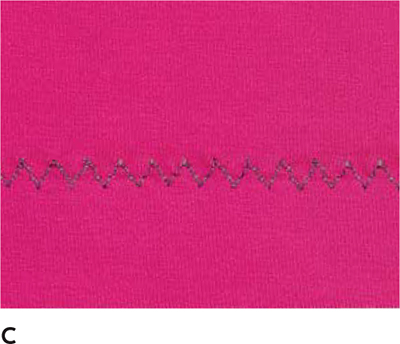
USING AN OVERLOCKER
Many home sewists these days also own an overlocker machine (known as a serger in some parts of the world) which is a match made in heaven for activewear sewing. With an overlocker you can achieve a finish that is virtually indistinguishable from ready-to-wear (RTW) activewear and can be as strong and long-lasting as any high-end gear. The strongest overlocker stitch for sewing seams is the 4-thread overlock, which has two lines of needle stitching in addition to the two looper threads encasing the seam allowance (D).
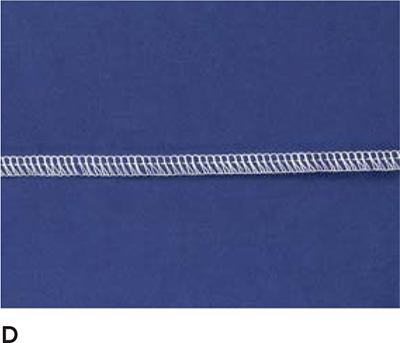
This means that if you break the first line of stitching, you have another as a backup before holes actually appear. Another popular overlocker seaming choice is to use the 3-thread overlock (one needle and two loopers) to get a mock flatlock look where the threads are seen on the outside of the garment. To achieve this, remove the left needle and loosen the right needle tension as far as it will go. Keep the upper looper tension somewhere in the middle and tighten the lower looper as far as possible. Stitch with the wrong sides of the fabric together, and once stitched, gently stretch across the seam until the stitching lies flat. The right side will show the lower looper threads (E), with the needle threads seen as a ladder on the wrong side (F).
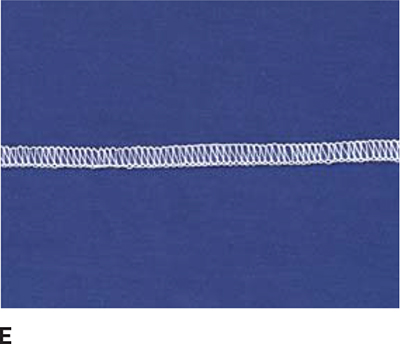
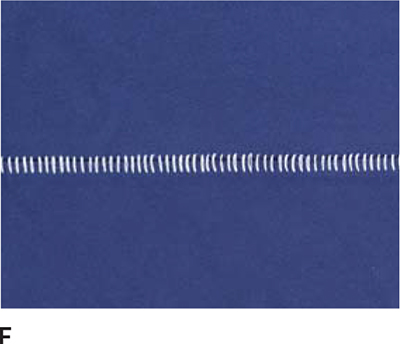
Since this stitch only uses one needle thread, you dont get the extra security of the additional needle as in the 4-thread overlock, but it gives a great decorative effect for highlighting interesting seamlines, and the side closest to the body is relatively flat with few threads to irritate sensitive skin.

